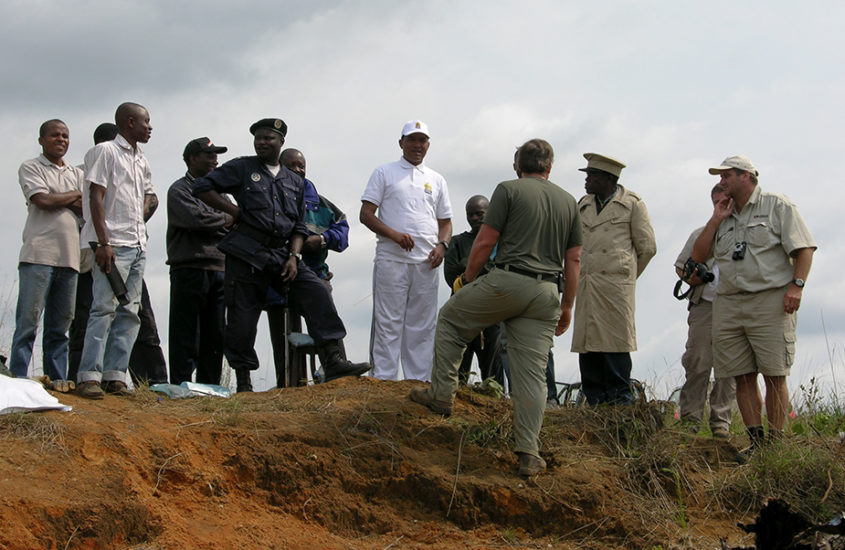Part 8: Government and Community Affairs

This is part 8 of a 12-part series describing the consequences of a typical large-scale loss of life incident. Following the framework of the 12 Principles of Crisis Management, I describe these consequences and offer best practice solutions for each consequence.
Consequence 8
There are multiple government agencies and other national governments demanding information, responding with their own actions, at times working contentiously and potentially in opposition to each other. There will be community groups and advocacy groups that may have roles or will have been impacted by the event. There could also be local industries that are directly affected. Then there are the company employees themselves, who will naturally want to be aware of what is happening, and if the company will survive the mass fatality event.
Solution
This is a job for your government and community liaison teams and the CEO. Your teams should be lead by a senior manager within the company. Following your plan, activate a government and community liaison team. While that is happening, the crisis management center should research and provide a quick assessment of the political and cultural situation of countries that may be involved in the incident. This is a brief summary gathered from the web and government contacts.
Next, the government side the team should establish contact with all involved national governments. Typically, liaisons focus on two areas – the first is working with those consular or citizen services that are looking after the involved nationals and the second is with government ministries that may be involved in search, recovery, and investigations – two different approaches are usually needed.
For the part of your team that deals with consular or citizen services, initial contact should be established from the crisis management center or call center. What they want to know is how many of their citizens are affected and what will you be doing to help them? Sharing your family assistance plans and providing regular reports on what is happening keeps them on the inside. More importantly, it also allows them to assist you with visa or other travel requirements for foreign families.
For the part of your team liaising with government ministries and political offices, again, initial contact should be established from the crisis management center or call center, then followed up with deployment of senior company liaisons to the actual offices. You may have to prioritize what government offices you can send a liaison to – consider those whose countries have lost the most citizens or are lead in the recovery and investigations. The job of the liaison is to provide a face of the affected company and direct access to company leadership for senior government staff.
On the community side, the team identifies impacted community groups. These could include tour groups, schools, or local industries affected by the incident and the company itself. Again, liaisons should be appointed to meet with these groups, find their concerns and address them. This is done proactively. In typical incidents there could be environmental concerns to address or questions about the viability of the business itself, with employees wondering what will happen to them. This team should work closely with the insurance and risk management team to provide funding as needed.
This is where the CEO’s presence makes a difference. The CEO is the leader and should visit some of the community groups. For example, if a large number of students was injured or killed in an incident, then the CEO or other senior person should consider going to the school to provide a briefing of what is being done to support families. They should make time for employee meetings to explain what the company is doing. Simply walking through the building and addressing clusters of employees has a huge impact on the morale and sense survival of a company.
This area may seem like a resource drain or not as important as the other areas. The fact is that all areas are important, and ignoring or under resourcing one area impacts all areas. Governments, community groups and employees all have needs and all can make a difference in the management of consequences if they know what is happening and feel they are being heard.
Example
In 2005, we went into central Angola to conduct recovery operations for two United Nations aircraft which had been shot down with a week of each other at the end of the Angolan Civil War. Prior to conducting this operation, we prepared a briefing and liaised with the Angolan government officials at the national, provincial and local level, including foreign and internal ministries as well as police. Once on-scene, we also requested to meet with a non-government leader – in this case, it was the local tribal leader on whose land we wanted to work. This was not a legal or diplomatic requirement, but a cultural one. I explained our purpose and goal and then asked for his permission to begin work. Beyond being the right thing to do, the practical benefit was that he was able to provide first-hand information on what happened. Additionally, he pointed out locations that although had been determined to be safe, three days prior to our arrival, a person had stepped on a missed landmine. So…pretty important stuff.
It is not unusual or unexpected that we are asked to brief or discuss operations with senior government officials; these have included Prime Ministers, Cabinet Minsters, Royalty, Governors, Office the President (US), and many others. Make no mistake – mass fatality events are extremely political. Those that have been mismanaged have brought governments down. Therefore, they become involved.

Latashia Hamons
Thank you kindly for being such a great source of information.